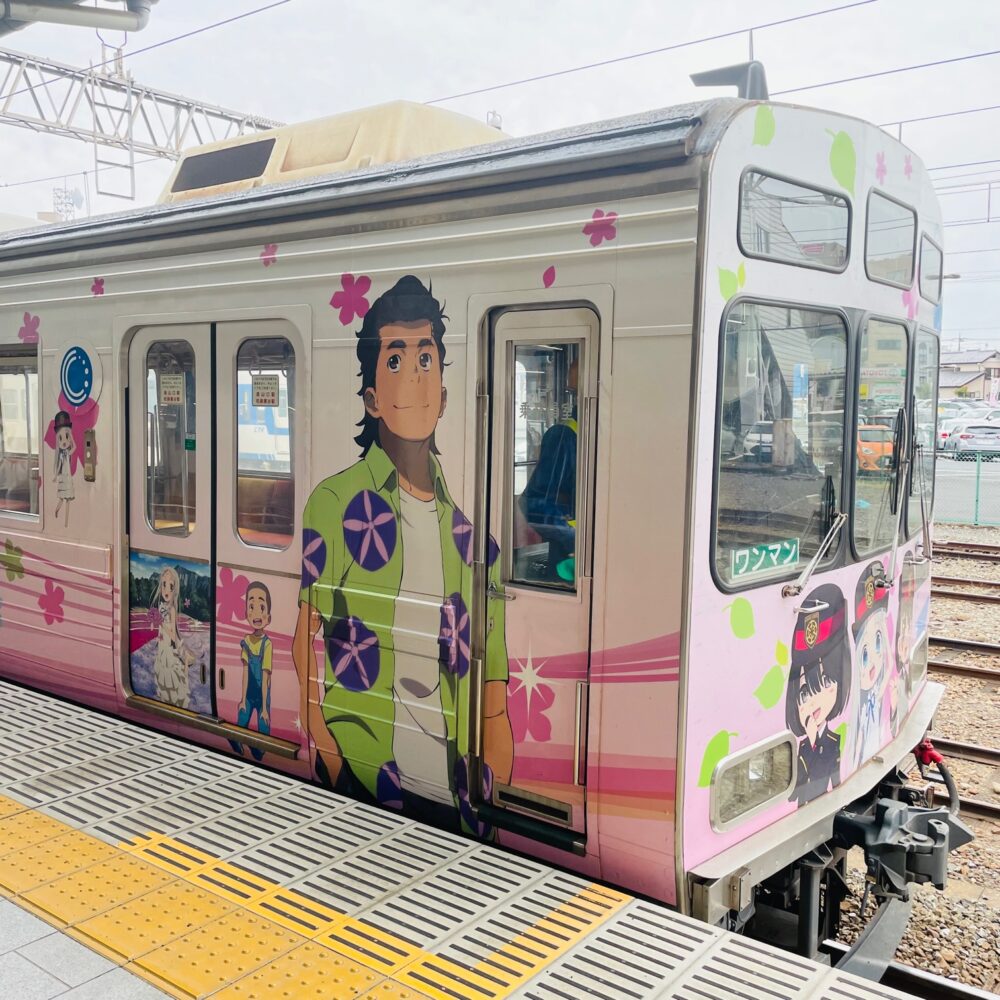Local trains in Saitama Prefecture (Chichibu Railway) (1)
Table of Contents
1: Seibu Railway’s express train La View to Chichibu
2: Shiba-sakura hill (Hitsujiyama Park), Mitsumine Shrine
3: Chichibu Railway to Kumagaya
4: Kangiin Shotendo (Menuma Shodenzan Temple)
5: “Yakitori” in Higashi-matsuyama

1: Seibu Railway’s express train La View to Chichibu
In late April, I went on a one-day trip to Chichibu and Kumagaya. First, I headed to Chichibu from Seibu Ikebukuro Station on the Seibu Railway’s La View express train. The La View is a beautiful express train with lemon yellow seats that give a vivid impression and huge windows that provide a sense of spaciousness. It began service in March 2019 as Seibu Railway’s ‘flagship train for the future.’ The design of the La View Express train was supervised by the world-renowned architect Kazuyo Sejima.
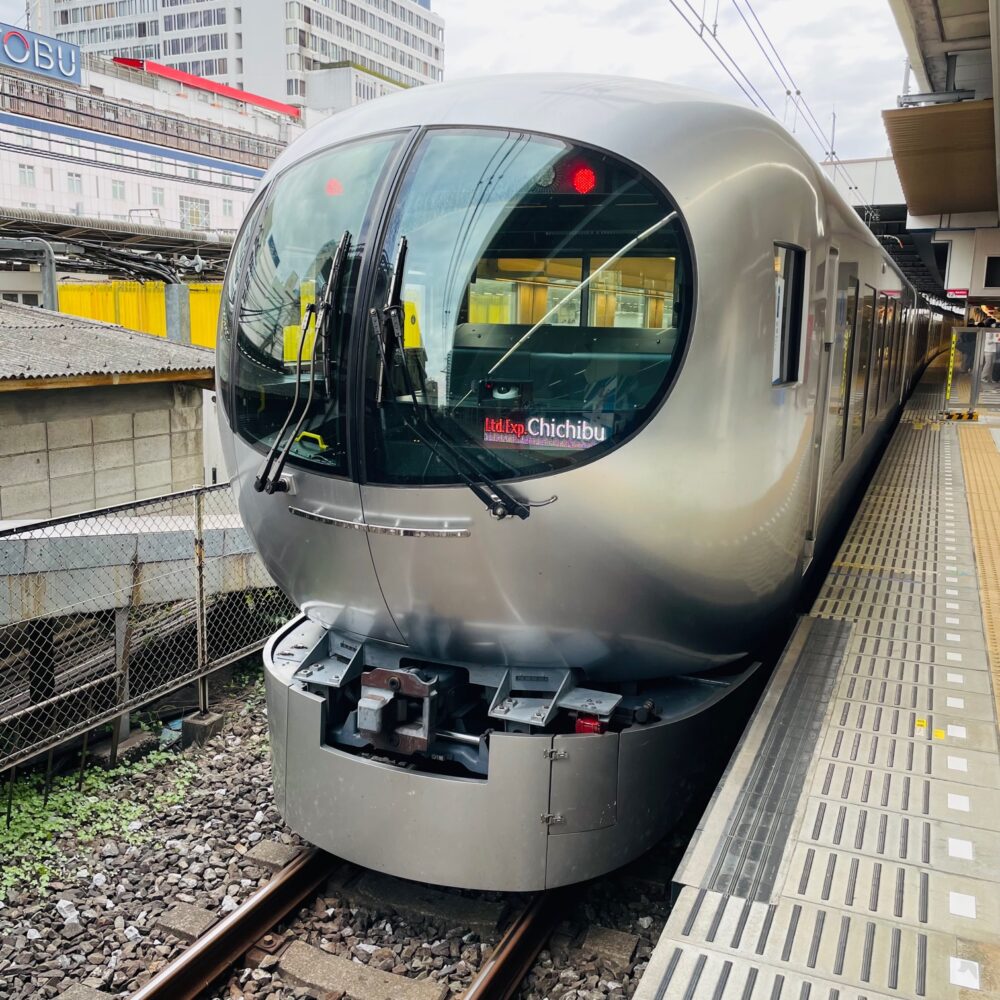
Kazuyo Sejima is one of my favorite architects, having won the Pritzker Prize, also known as the ‘Nobel Prize for Architecture.’ Her impressive architectural designs include the Hitachi Station and the Sumida Hokusai Museum.
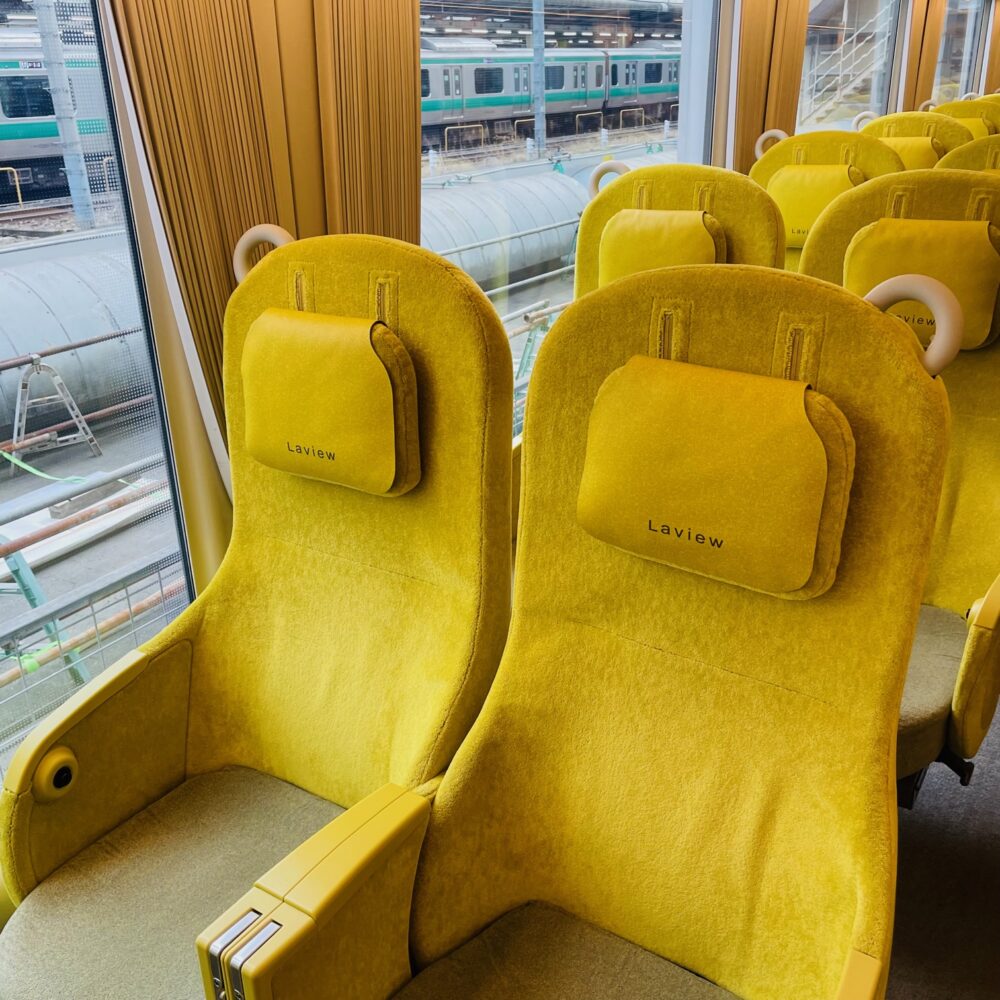
2: Shiba-sakura hill (Hitsujiyama Park), Mitsumine Shrine
Arriving at Seibu-Chichibu Station, I went to Shibazakura Hill (Hitsuyama Park), a 20-minute walk away. The moss phlox were in full bloom just in time to enjoy the stunning scenery. Located at the foot of Mount Bukou (1,304 meters), the symbol of Chichibu, Hitsujiyama Park has around 1,000 cherry trees in bloom from late March to early April, including Someiyoshino (Yoshino cherry), weeping cherry trees, and double cherry blossoms. However, it is the brightly colored and photographically attractive ‘Shiba-Zakura Hill’ that makes Hitsuyozan Park the most famous. An entrance fee of 300 yen is required to enter the park when the moss phlox is at its best.
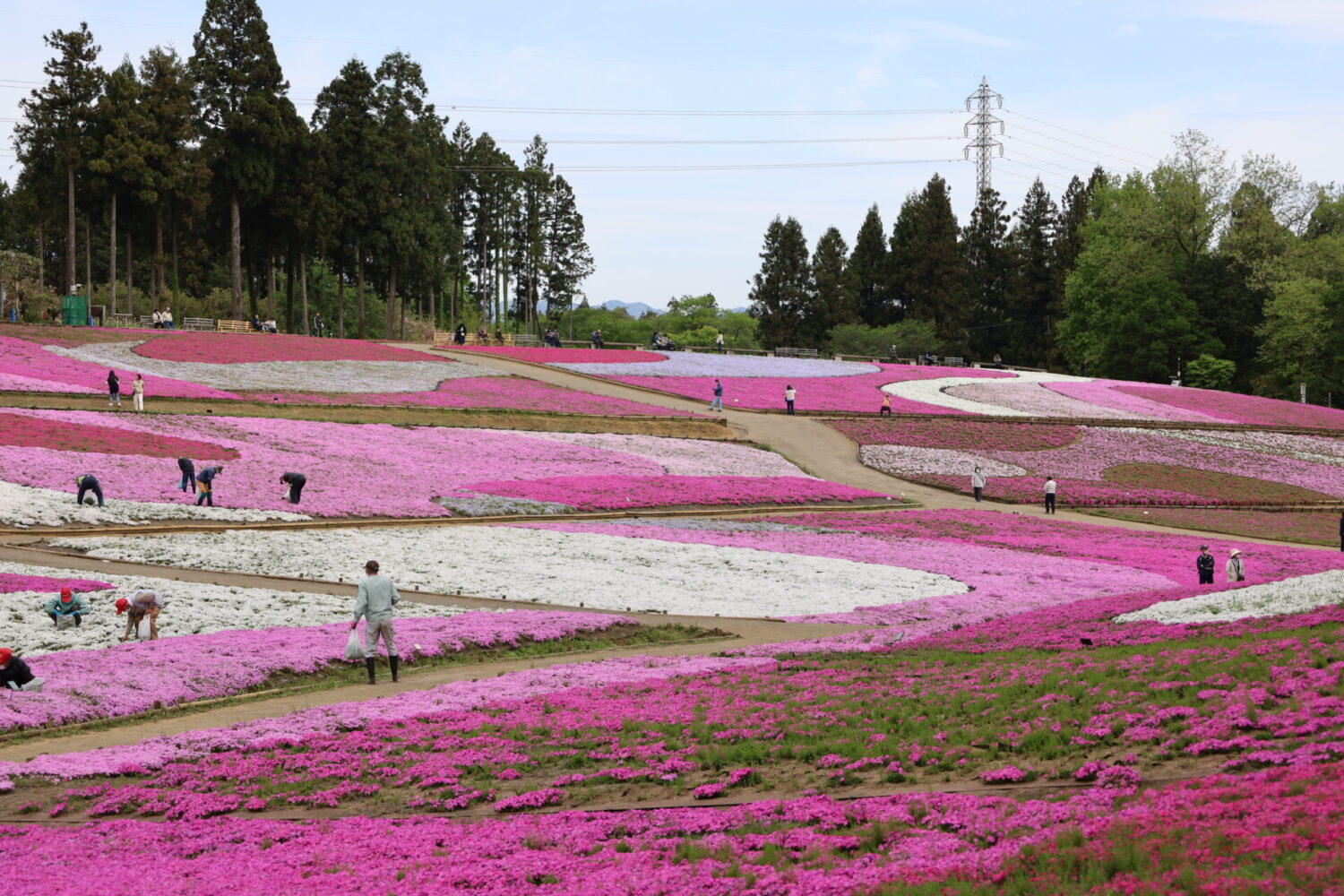
After Hitsujiyama Park, I took a bus to Mitsumine Shrine. Mitsumine Shrine is also located in Chichibu-Tama-Kai National Park. Despite the bus departing on a weekday morning (9:10 am), the bus was almost full of seats and many standing passengers. Most passengers were worshippers at Mitsumine Shrine, but there were also some climbers and hikers in the mountains of the Chichibu-Tama-Kai National Park.
Mitsumine Shrine is said to have originated when Yamato Takeru no Mikoto enshrined Izanagi no Mikoto and Izanami no Mikoto during his expedition to the east. It is said that a wolf guided Yamato Takeru no Mikoto along the way at this time and is enshrined together as a messenger of the gods. For this reason, instead of Komainu (guardian dogs), statues of wolves sit in various parts of the shrine.
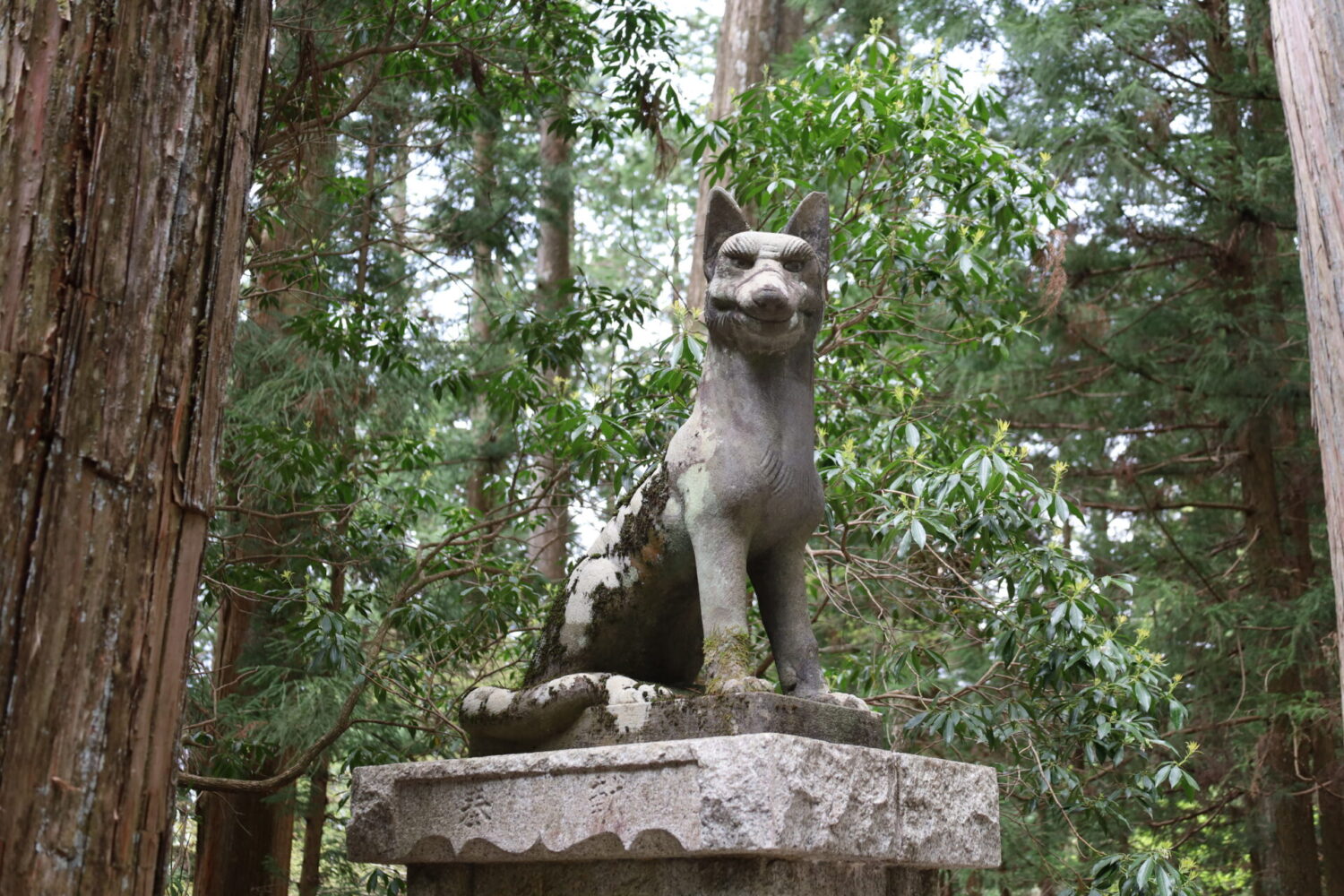
The torii of Mitsumine Shrine is the Mitsu-Torii, a combination of three Myojin-type torii gates. The three torii gates are very rare in Japan.

The main shrine building, worship hall, Zuijimon gate, and Temizusha (building for cleaning hands and rinsing mouth) of Mitsumine Shrine are designated tangible cultural properties (buildings) by Saitama Prefecture. Temizusha may be one of the largest in the country. The roof of the Temizusha is gabled with double eaves roof and is carved on all four sides in richly colored woodcarvings.
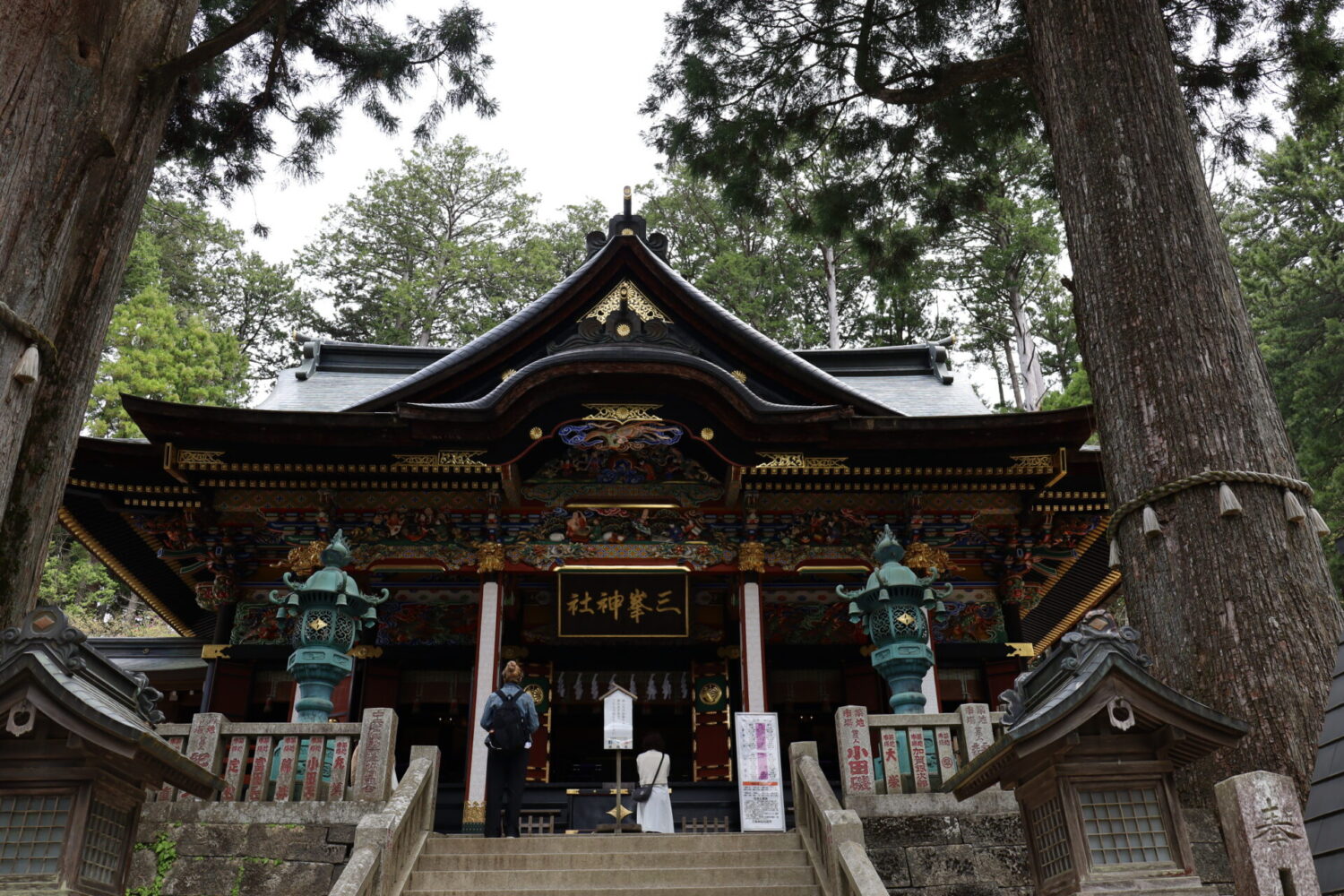

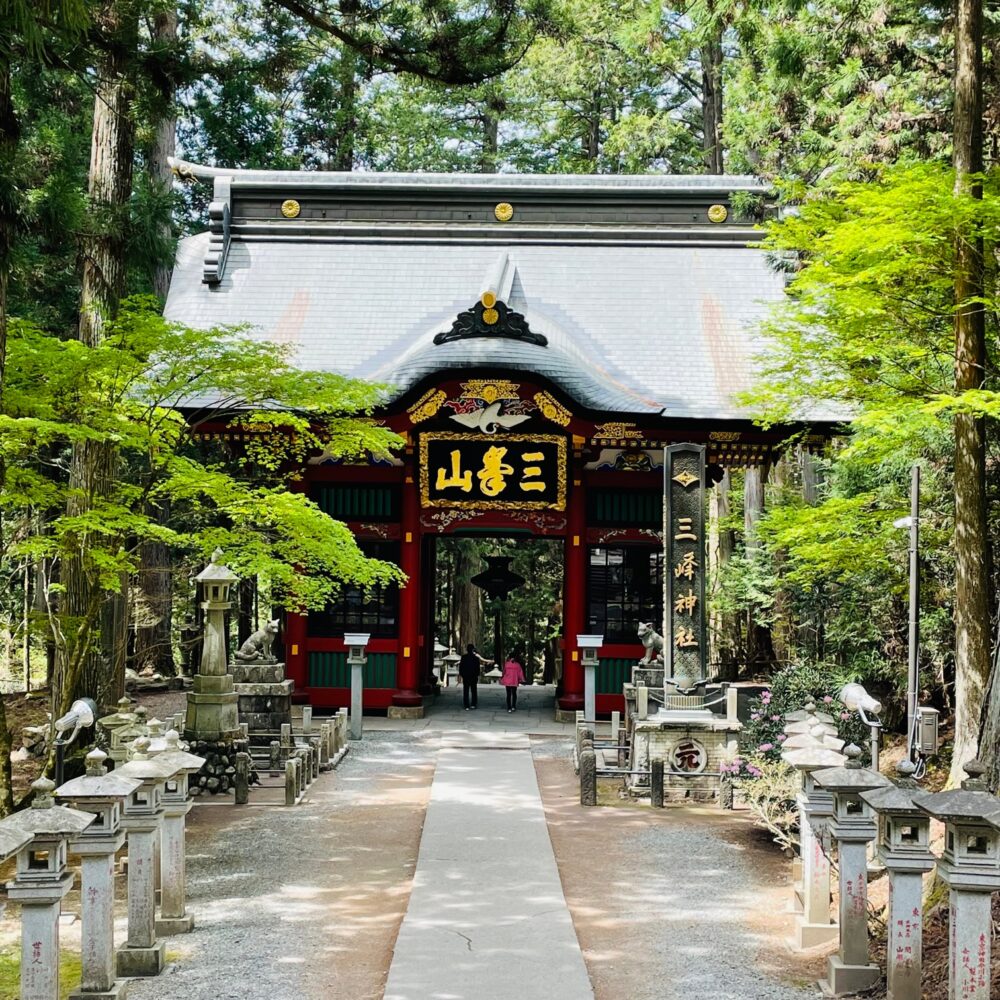

From the Okumiya Worship Hall, we can enjoy stunning views of the mountains. We can also enjoy a wonderful view from the Mitsumineyama Oshimaya, where I had lunch.
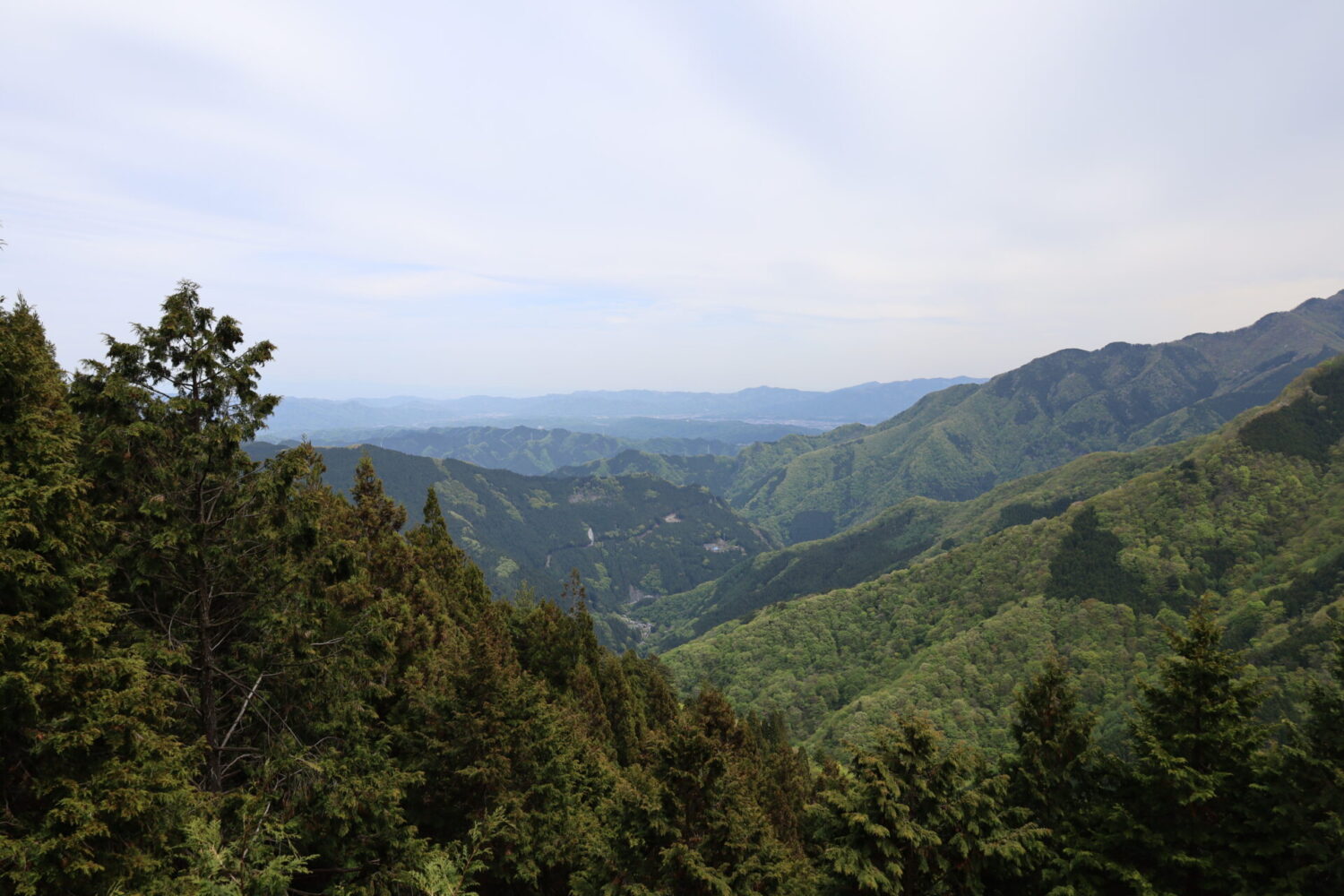

Actress Yuriko Yoshitaka was filmed eating “Waraji-katsudon” at Oshimaya for a Seibu Railway commercial poster. This commercial raised the profile of Chichibu’s famous gourmet “Waraji-katsudon.” I ordered a “Waraji-katsudon.” The pork cutlet was a little tough, but the sauce with dashi broth was delicious, and it is a recommended local gourmet dish.
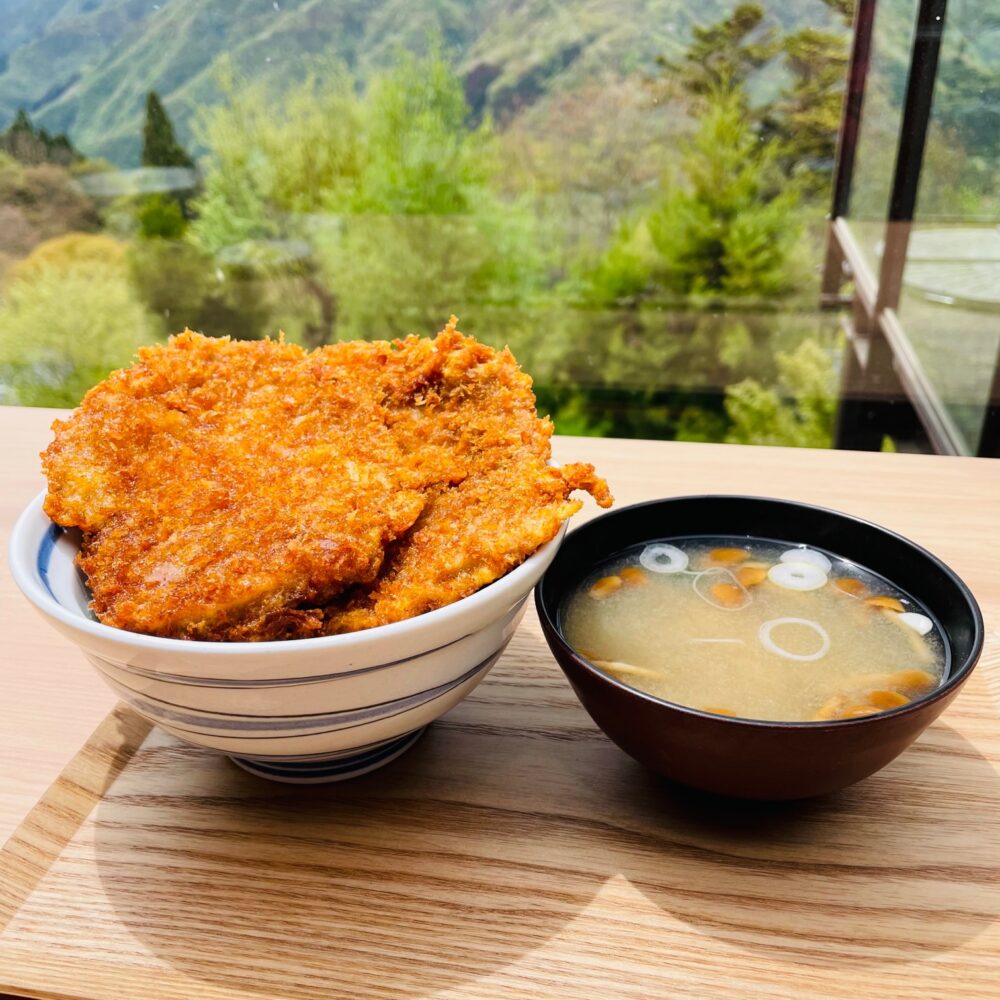
We can see Mount Kumotori (Tokyo’s highest peak, 2,017 m) from the Oshimaya, which is said to be the birthplace of Tanjiro Kamado and his sister Nezuko, the “Kimetsu no Yaiba.” A panel about them was on display at the Mimine Visitor Centre. The board also said that 3.4 km away from Mitsumine Shrine is Kamado-mihashira Shrine (竈三柱神社).

Afterward, I ate “Nakatsugawa Imo Dengaku,” a Chichibu gourmet dish, at Sanroku-tei. Nakatsugawa imo (potato) is a specialty of Otaki village in Okuchichibu. This potato has soft skin that does not crack even when skewered. Nakatsugawa imo itself, seems to have almost no taste, but it is good taste by using locally produced miso, sesame seeds, and seasonings. It looks simple, but it is a very tasty dengaku. It is a must-try when visiting Mitsumine Shrine.

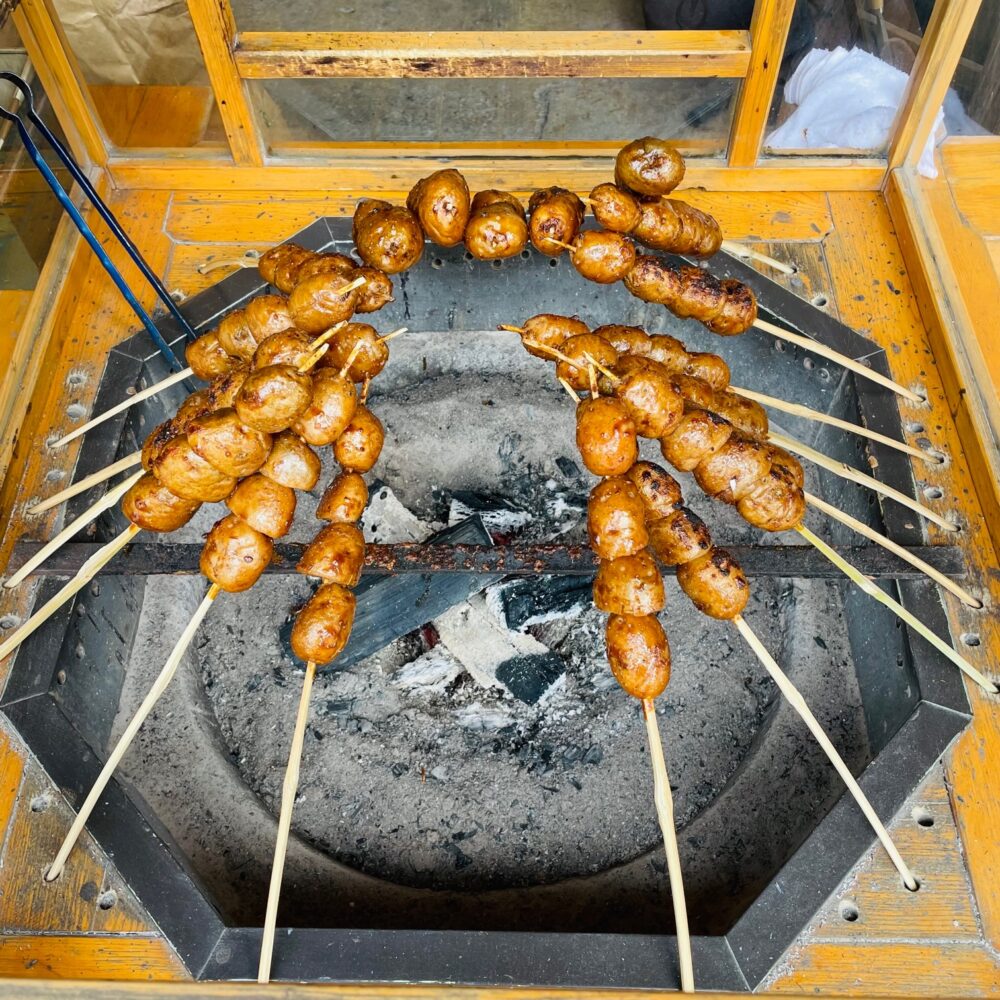
3: Chichibu Railway to Kumagaya
From Mitsumine Shrine, I took a bus back to Seibu-Chichibu Station again. I took the Chichibu Railway from Ohanabatake Station to Kumagaya Station. According to the staff at Oshimaya, the buses between Seibu-Chichibu Station and Mitsumine Shrine are always crowded. So he advises customers to line up 20 minutes before departure time. It is the busiest local bus service on the weekday, except during special events.
The sub-station name of Ohanabatake Station is Shibazakura Station. The station platform also has a flowerbed of moss phlox, which is very beautiful.

Chichibu Railway is the only regional railway operator headquartered in Saitama Prefecture. Its operating route is 71.7 km long, the longest in the Kanto region. Chichibu Railway is active in the freight transport of limestone from Mt Bukou, and Taiheiyo Cement (formerly Chichibu Cement) is the largest shareholder of Chichibu Railway.

The SL Paleo Express, a sightseeing train, operates a round trip from Kumagaya Station to Mibuguchi Station, mainly on weekends and public holidays. The Chichibu City Hall also operates wrapped trains like the ‘Chou-heiwa Busters Train.’ Chichibu City was the model for the setting of the anime trilogy “Ano Hi Mita Hana no Namae o Bokutachi wa Mada Shiranai.” ‘Kokoro ga sakebitagate irunda (The Heart Wants to Scream)’ and ‘Sora no Aosa wo shiru hitoyo’. All trains are covered in wrap advertising anime characters.
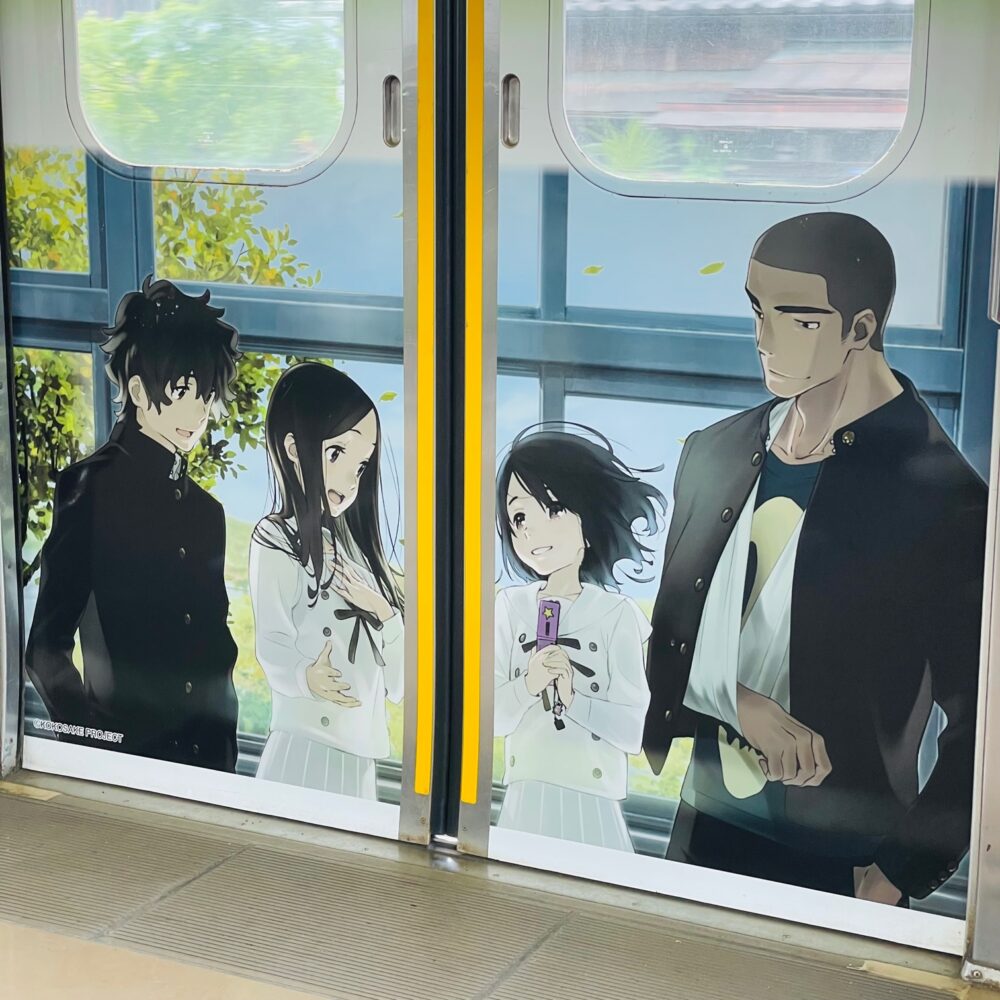
Nagatoro Whitewater rafting, a popular tourist attraction, is directly operated by Chichibu Railway. To use the Nagatoro Line Crawler, get off at Nagatoro Station, purchase a ticket at the Nagatoro Line Crawler Hombu Ticket Office, and board the free shuttle bus from Oyahana-bashi Bridge. The fare is ¥2,000 for adults and ¥1,000 for children (10% more during peak season).
Chichibu Railway has sold off its bus and taxi businesses, so the railway business accounts for 83% of sales (in FY 2019). The proportion of railway business is relatively high among regional railway operators, which are diversifying their business. It was also one of the few regional railway operators profitable in the railway business until FY 2019 before Corona (only 19 of the 95 operators were profitable).
Except for the Nagatoro Line Crawl, the Chichibu Railway line (between Ohanabatake Station and Kumagaya Station, where I boarded the train) is more of a lifestyle route for residents than a tourist route. When I boarded the line, primary school students were commuting to school, and people were getting on and off the train on their way home from farm work or shopping. Note that the new Fukaya Hanazono Premium Outlets opened in October 2022 and are a three-minute walk from Chichibu Railway’s Fukaya Hanazono Station.
